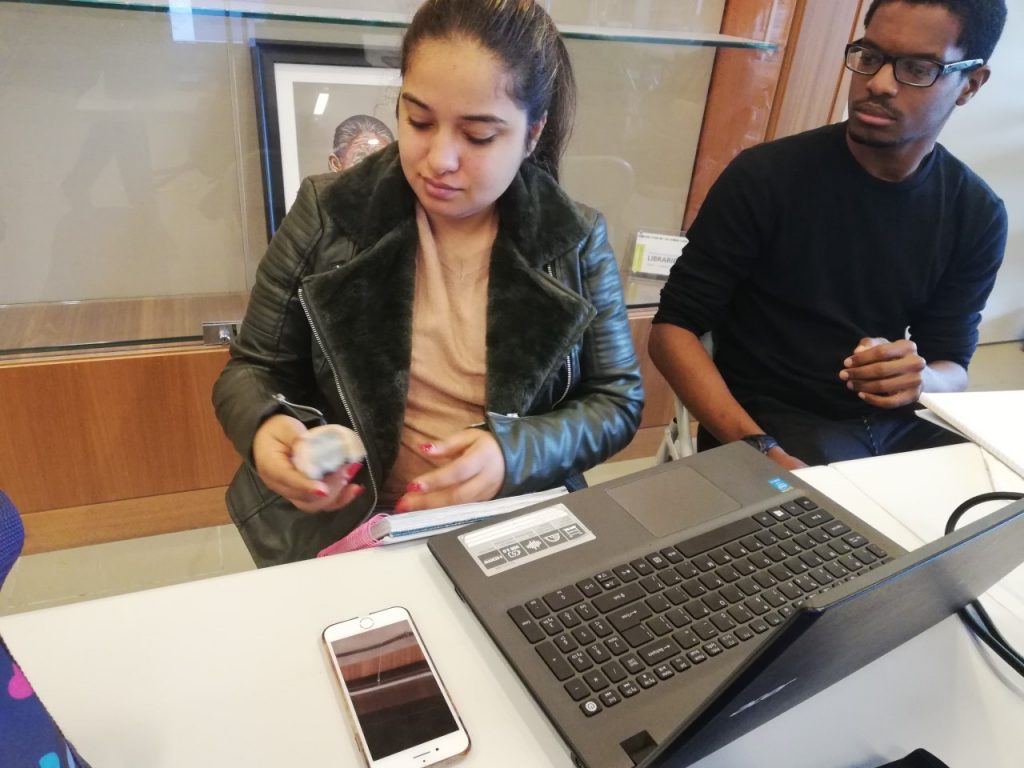#WIMTACHatHome: Simerjit Kaur

Despite the COVID-19 pandemic, WIMTACH has continued its efforts to support its Student Researchers to gain experiential learning, job opportunities, employable skills and industry knowledge of digital health sectors. This series will highlight how students and faculty who work with WIMTACH are managing the ongoing changes to their daily lives.
Simerjit Kaur, like all other Centennial College students, was required to study from home this past March. While online tools such as Slack, Google and Zoom have made communication between students easier, coordination, especially for group work, became a unique challenge.
“For some of the courses it was difficult because there are a lot of group projects and when you aren’t meeting your group, it’s difficult to find time [where everyone is available]. I had one subject where we had nine members [in a group] and it was difficult to find a time to talk or find solutions.”
Since she received the Excellence in Applied Research Innovation and Entrepreneurship (EARIE) Scholarship, this circumstance seems short-lived. However, like many of her peers, Simerjit was also working with WIMTACH as a Student Researcher, and all WIMTACH projects are highly collaborative. Additionally, time away from the classroom means students aren’t actively using and applying the soft and hard skills that they’ve learned.
Luckily, WIMTACH provides opportunities to students to do just that. Student Researchers are hired based on, among many other things, their capacity to learn new skills on the spot as well as to take what they’ve learned in the classroom and apply it to applied research projects. Simerjit is just one of over 400+ students who have had that chance.
“I’m learning a lot. I used C# as my first project after my in-class learning. That’s something I’m really proud of because I learned something in the class and implemented the same in the project….WIMTACH has given me the opportunity to learn and to develop skills so I can use them on my resume and get the job because I already have relevant experience using these technologies that are being used in Canadian market [on WIMTACH projects]…I’m being prepared to pursue a job in back-end development. That is completely a plus point,” she explains.
She uses Java as an example of the value of this opportunity. “You can look at me as new to Java. [My professor] basically taught me so well it made me interested in learning and working in that particular lane. There’s definitely a credit [I have to give].”
Simerjit took that interest to the WIMTACH IT project as a back-end developer for a healthcare company that specializes in electronic medical records. She is one of more than 25 students from various Centennial disciplines working on it.
With so many people on the project, including the Principal Investigator and WIMTACH Research Associate, organization is key. To ensure this, WIMTACH Research Associate of the project Majura Maheswaran implemented a modular approach wherein all students were organized into micro teams to problem solve, coordinate and ultimately produce more APIs. As a result, it has facilitated “learning from each other’s experiences” in order to “be on track and achieve deadlines”, especially as it pertains to code review; her team of back-end developers review each other’s codes to collaborate and work efficiently. This is what Simerjit credits for “doing really well” with the EMR IT Project.
For her, the best and most challenging parts about working from home have to do with problem-solving. She has realized an important aspect of collaboration that she only noticed in her student group projects: everyone has their own way of working.
“Some people say to discuss things before meetings or some people say to discuss with team members if they have a problem. That was a challenging part to see how to work with people who have different approaches to work.”
The best part is figuring it out.
Simerjit’s advice to other students is simple: time management.
“This is something that is helping me a lot. We are staying at home, so we can work from 8am-8pm. But if we’re working these long hours, there’s definitely a problem…“If there’s a 4-hour task, we can’t spend 6-7 hours to complete that task [because] we are not using our [full] capability to do the task in a specific time…If we have a time management plan..we’ll focus more on our work.”
But in case time management is still a challenge, Simerjit suggests adding “buffer time” to the daily schedule so that it includes eating, breaks and asking for additional support on tasks, research and other work.
————————————–
For more information on WIMTACH projects and services, please visit https://wimtach.centennialcollege.ca/
For updates on WIMTACH’s operations during the COVID-19 pandemic, please visit https://mailchi.mp/d9a20aac07f0/covid-19-update


0